What Are The Native Animals On Florida's Gulf Coast Islands
Animals Of The Florida Everglades
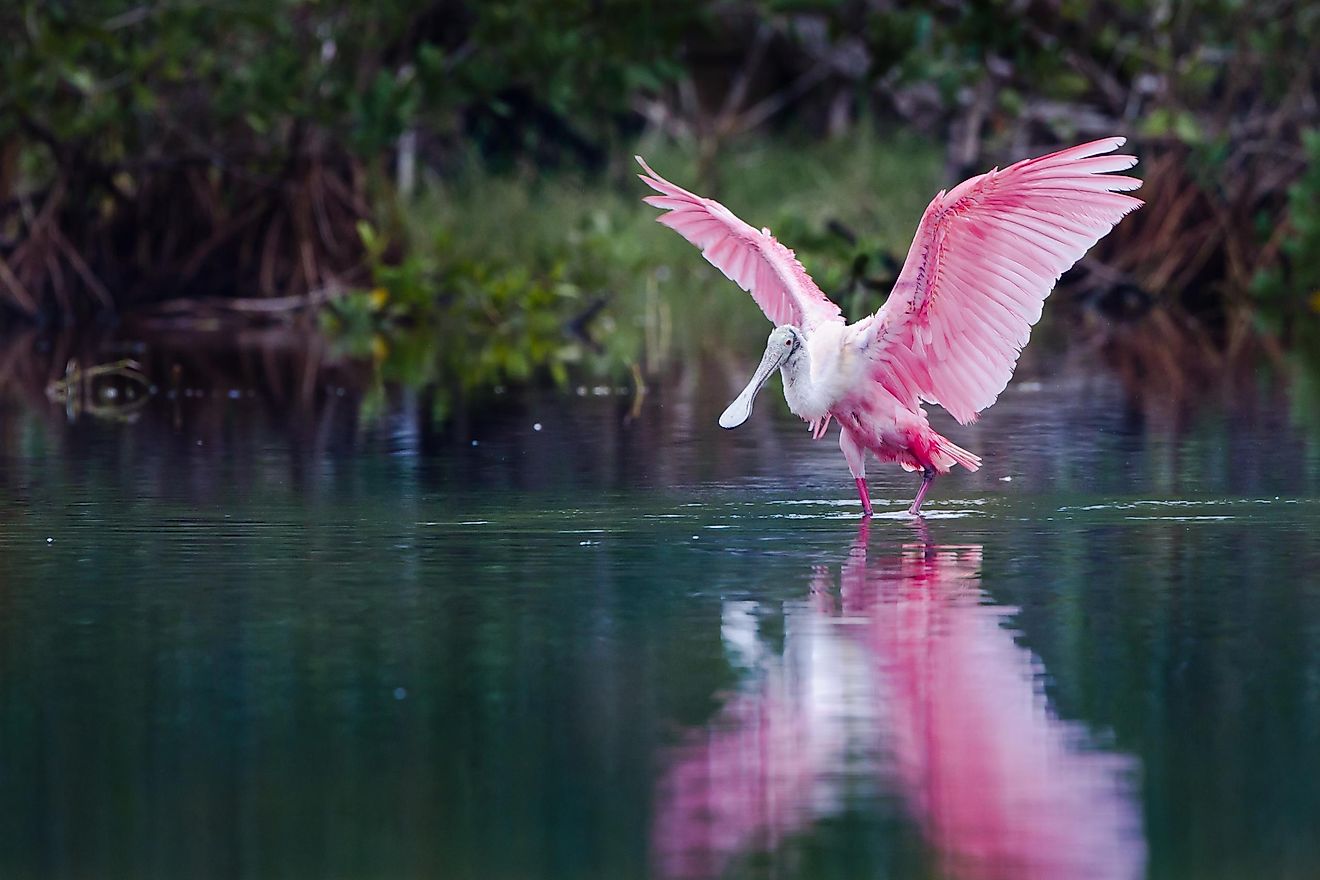
- The Everglades is a fragile, complex ecosystem that is located in the southern part of the The states State of Florida.
- The Everglades National Park is the largest surviving subtropical wilderness in the face-to-face United States.
- Some of the significant animals that are institute here include the American alligator, Florida panther, West Indian manatee, wood stork, bald eagle, and American crocodile.
The Everglades is a unique, fragile, complex ecosystem that comprises a vast network of tropical wetlands and forests and is located in the southern part of the US State of Florida. The Everglades National Park, which occupies an area of 6,106.vi kmtwo, is often considered the largest surviving subtropical wilderness in the contiguous Usa.
The mosaic of important habitats that make up the Everglades National Park supports several significant floral and faunal species that are unique to the Everglades region and are found nowhere else on the planet. It has been estimated that nearly 39 threatened species, 300 fish species, 50 reptilian species, 360 avian species, and 40 mammalian species are found in the Everglades National Park. In addition to these, numerous insects and invertebrate animal like mollusks, crustaceans, arachnids, centipedes, millipedes, are found here. Notable amphibians like the southern leopard frog and the American dark-green tree frog have likewise been recorded in the Everglades.
The following commodity discusses the 10 iconic faunal species that are found in the Florida Everglades.
American Alligator
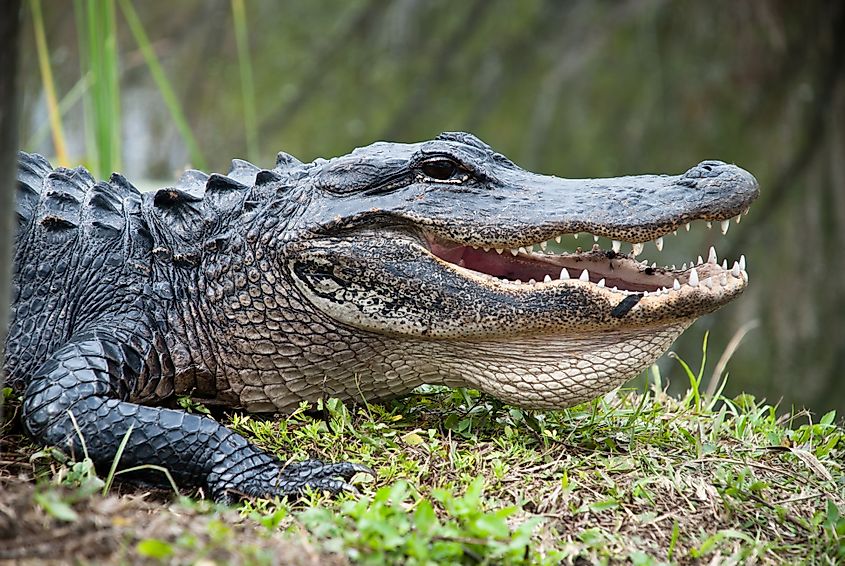
American alligators (Alligator mississippiensis) are considered one of the largest reptilian species in the unabridged United States. They are commonly found in freshwater rivers, lakes, saltwater marshes, and swamps in the southeastern part of the U.s.a.. Developed American alligators feed on fish, reptiles, birds, and mammals while their hatchlings feed on the invertebrates. These alligators also act equally "ecosystem engineers" by constructing alligator holes in the wetland ecosystems, which in turn help in providing suitable habitats for various other organisms. American Alligators are regarded every bit a keystone species in the Florida Everglades and take been listed as "Least Concern" on the IUCN Crimson List. American Alligators are official "Country Reptile" for the The states States of Mississippi, Louisiana, and Florida.
American Crocodile
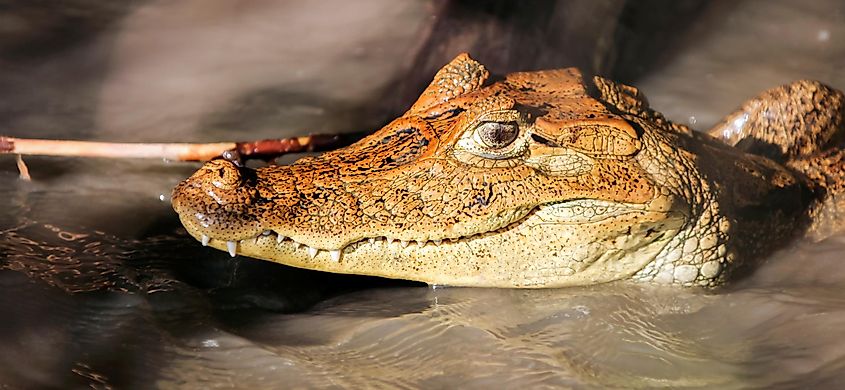
The American crocodile (Crocodylus acutus) is a big crocodilian species that are widely distributed throughout Southern Florida (in the Everglades National Park), United mexican states, as well as various Central and South American countries. They commonly inhabit freshwater rivers, brackish lakes, mangrove swamps, lagoons, and small-scale islands. The eyes, ears, and nostrils of this crocodile species are placed on the top of their caput, while the rest of the torso remains concealed underwater for launching surprise attacks on its prey. American crocodiles feed on fish, birds, snakes, turtles, crabs, frogs, and minor mammals like raccoons and opossums. American Crocodiles have been listed equally "Vulnerable" by the IUCN.
Florida Panther
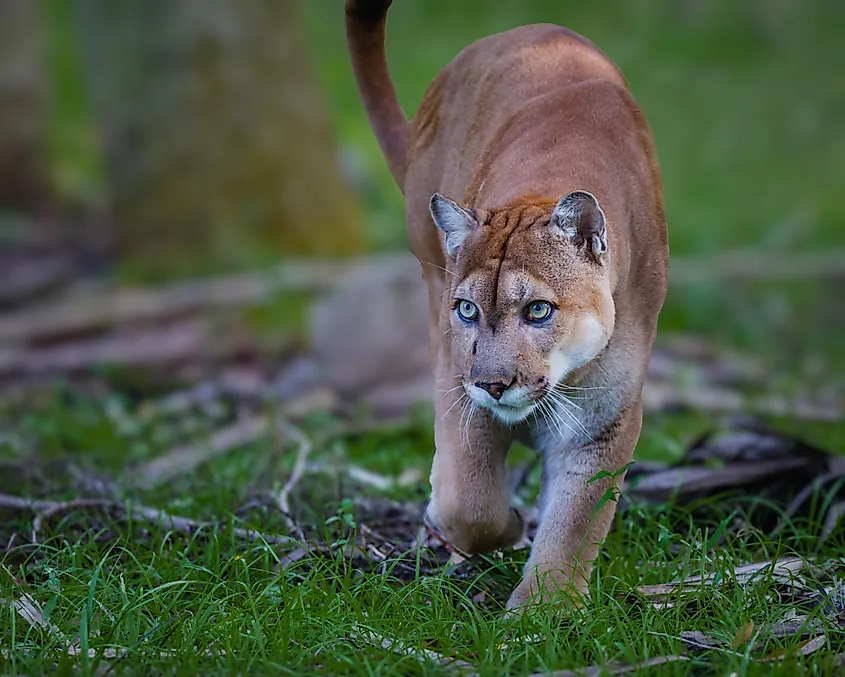
The Florida panther (Puma concolor cougar) represents the only convenance cougar population that is constitute in the eastern part of the United States. They are found in South Florida where they inhabit a broad range of habitats including freshwater swamp forests, hardwood hammocks, and pinelands. This big carnivore species feed on hares, white-tailed deer, waterfowl, feral pigs, storks, rodents, and American alligators. However, in recent times, the Florida panther faces many threats including predation and fragmentation of habitat. The Florida panther presently occupies only 5% of its original range and has therefore been listed every bit "Endangered" by the IUCN. The Florida Panther is the official state animal of the US State of Florida.
West Indian Manatee
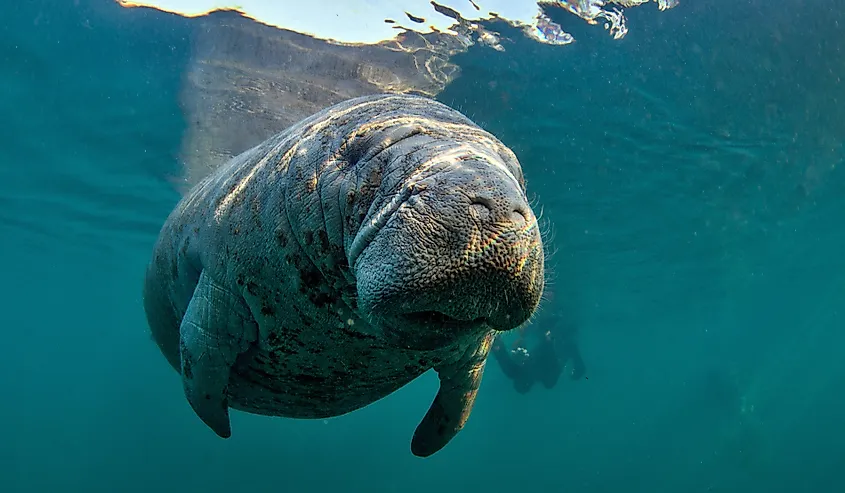
The Due west Indian manatee (Trichechus manatus) is a large aquatic mammal that is commonly found in the shallow coastal areas of the southeastern United States. Currently, there are two subspecies of the Due west Indian Manatees, the Florida manatee (Trichechus manatus latirostris) and the Antillean manatee (Trichechus manatus manatus). The West Indian Manatee is primarily a herbivorous species and generally feeds on seagrass and other aquatic plants. As of 2017, they have been classified as "Threatened" under the Usa Endangered Species Act. The Due west Indian Manatee has been listed as "Vulnerable" by the IUCN and its two subspecies as "Endangered."
White-Tailed Deer
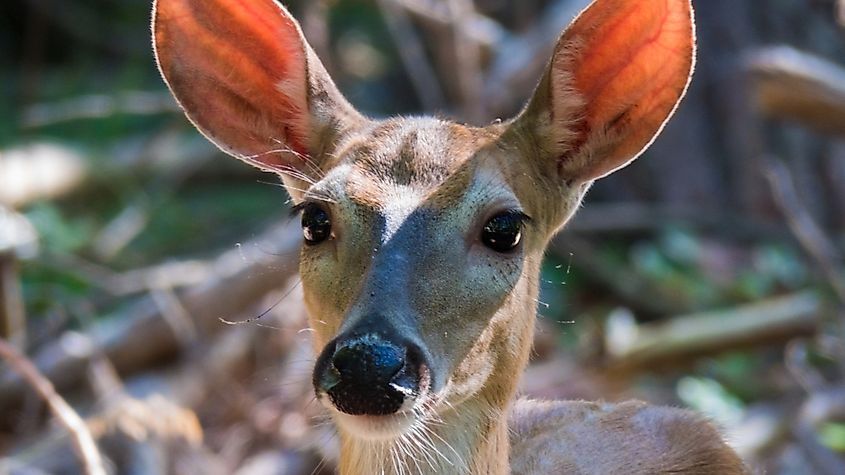
The white-tailed deer (Odocoileus virginianus) is commonly found in the Florida Everglades along with various other countries in North, South, and Cardinal America. They generally inhabit the tropical dry broad-leafed forests and mixed deciduous forests. White-tailed deer are herbivores and provender on plants, eating legumes, shoots, leaves, and grasses. The white-tailed deer are preyed upon past many predators like cougars, jaguars, American alligators, bobcats, blackness bears, and Canadian lynx. They have been listed as "Least Business organisation" by the IUCN.
Tree Snail
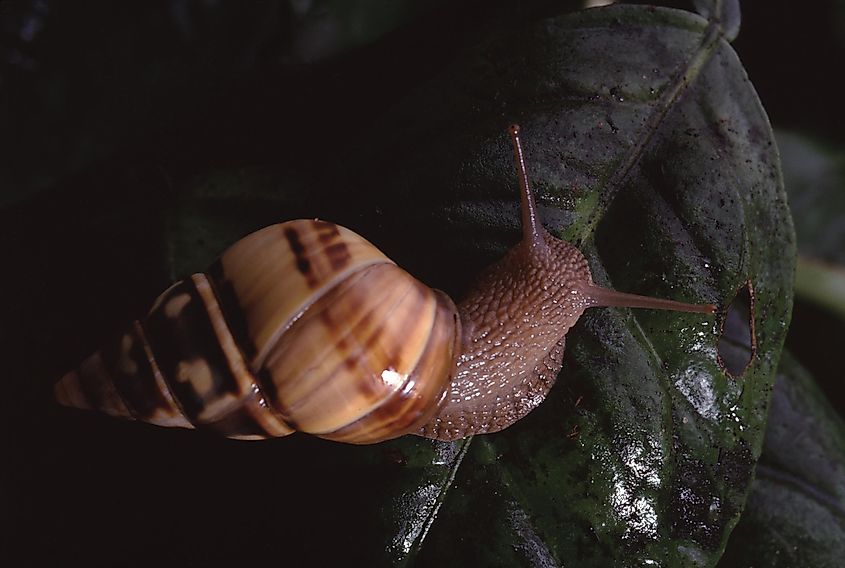
The fiddling tree snail (Liguus fasciatus) is widely found throughout the Caribbean area including the southern function of Florida and the Everglades National Park. The tree snail mostly inhabits the tropical hardwood hammocks, shrubs, and tropical forests. The snail feeds on algae, fungi, and lichens which they ordinarily scrap from the bark of their host plants.
Eastern Indigo Snake
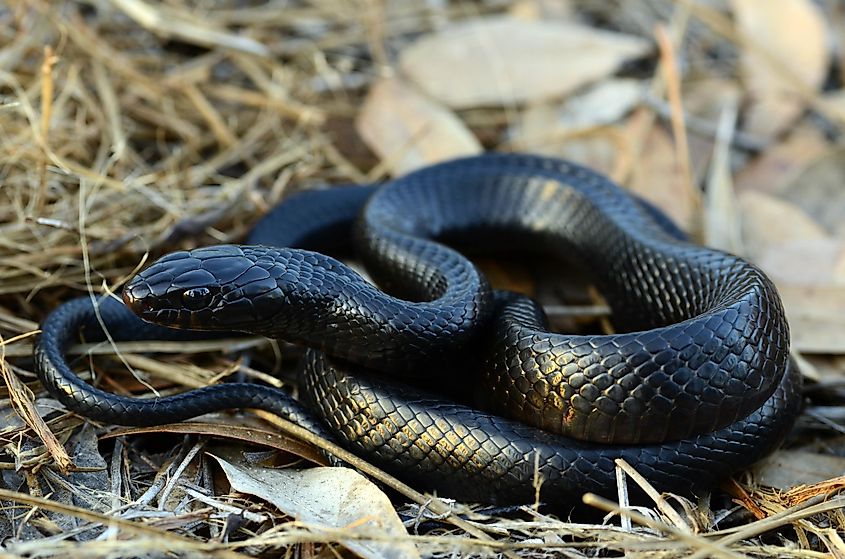
The eastern indigo snake (Drymarchon couperi) is a large non-venomous serpent that is commonly found in the eastern part of the United States. This snake inhabits the tropical hardwood hammocks, cane fields, flatwoods, riparian thickets, and sandhill plant communities. The eastern indigo ophidian feeds on small animals like rodents, frogs, turtles, lizards, every bit well as small birds. This snake currently faces threats due to habitat loss and has been listed every bit a "federally threatened species" under the United states of america Endangered Species Act. It is, nonetheless, listed as "Least Business concern" by the IUCN.
Woods Stork
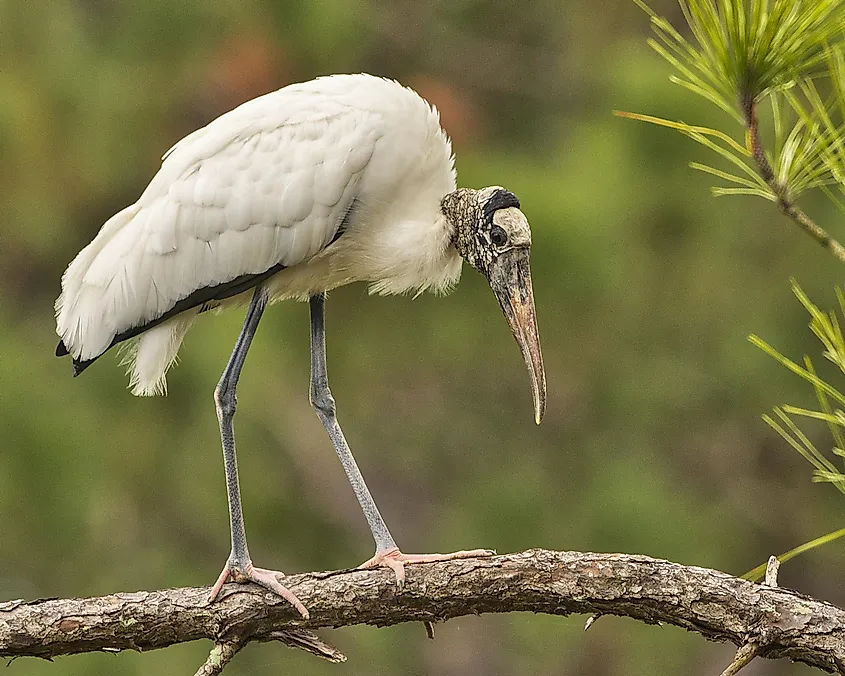
The wood stork (Mycteria americana) is a large wading bird that is plant in tropical and subtropical wetland habitats. This avian species usually prefer to live in the marshy and swampy areas and build their nests in the cypress trees and in the mangrove forests. Wood storks feed on fishes, insects, venereal, and frogs. The wood stork faces astringent threats due to predators, habitat alterations, and drought, and has been listed as "Threatened" under the US Endangered Species Act. It is, nevertheless, listed as "Least Concern" past the IUCN.
Cape Sable Seaside Sparrow
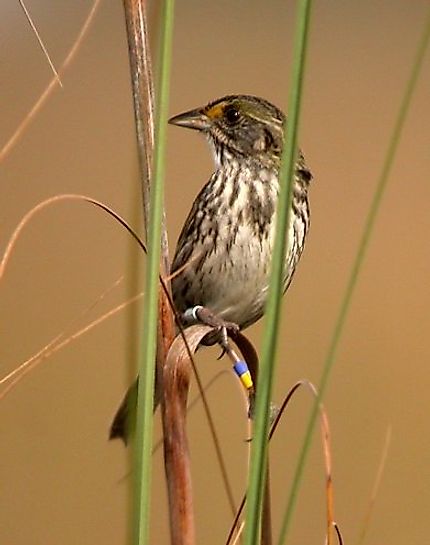
The Cape Sable seaside sparrow (Ammospiza maritima mirabilis) is a small bird that is endemic to the southern part of Florida where they are mainly institute in the freshwater and stagnant h2o habitats. The sparrow prefers to build their cup-shaped nests in the marl prairie communities that consist of muhly grasses. The largest population of this avian species is found in the Taylor Slough of the Florida Everglades and also in the Large Cypress National Preserve. The Greatcoat Sable seaside sparrow is listed equally "Endangered" under the US Endangered Species Human activity.
Bald Eagle
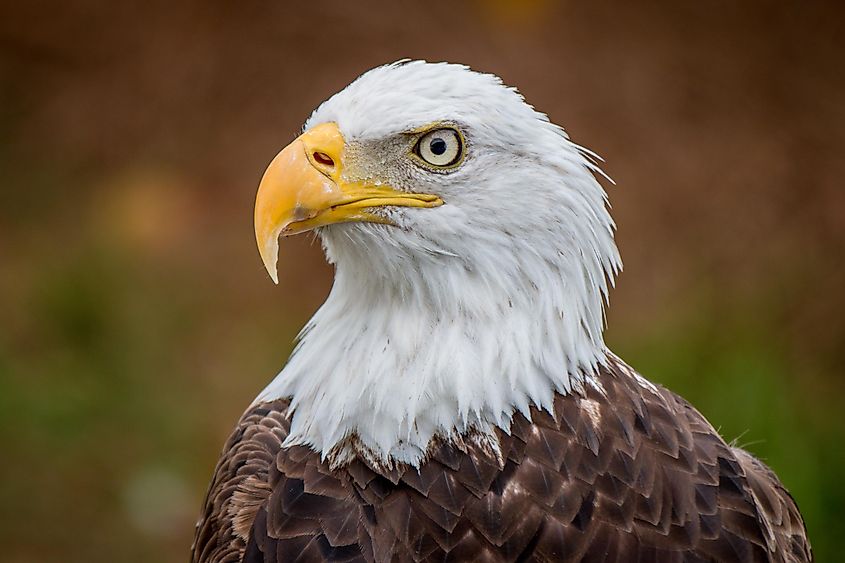
An iconic bird, the bald eagle (Haliaeetus leucocephalus) is quite widespread in the North American continent, including the entire United states and parts of Mexico and Canada. The bald eagle prefers wetlands, swamplands, and large open up water bodies and built its nests in the mature hardwood, and cypress trees that surround these habitats. The bald eagle feeds on fishes and other smaller birds and mammals. It is listed equally "Least Concern" past the IUCN and is regarded as the national bird of the Us.
Source: https://www.worldatlas.com/articles/what-animals-live-in-the-everglades.html
Posted by: garlandfrome1953.blogspot.com

0 Response to "What Are The Native Animals On Florida's Gulf Coast Islands"
Post a Comment